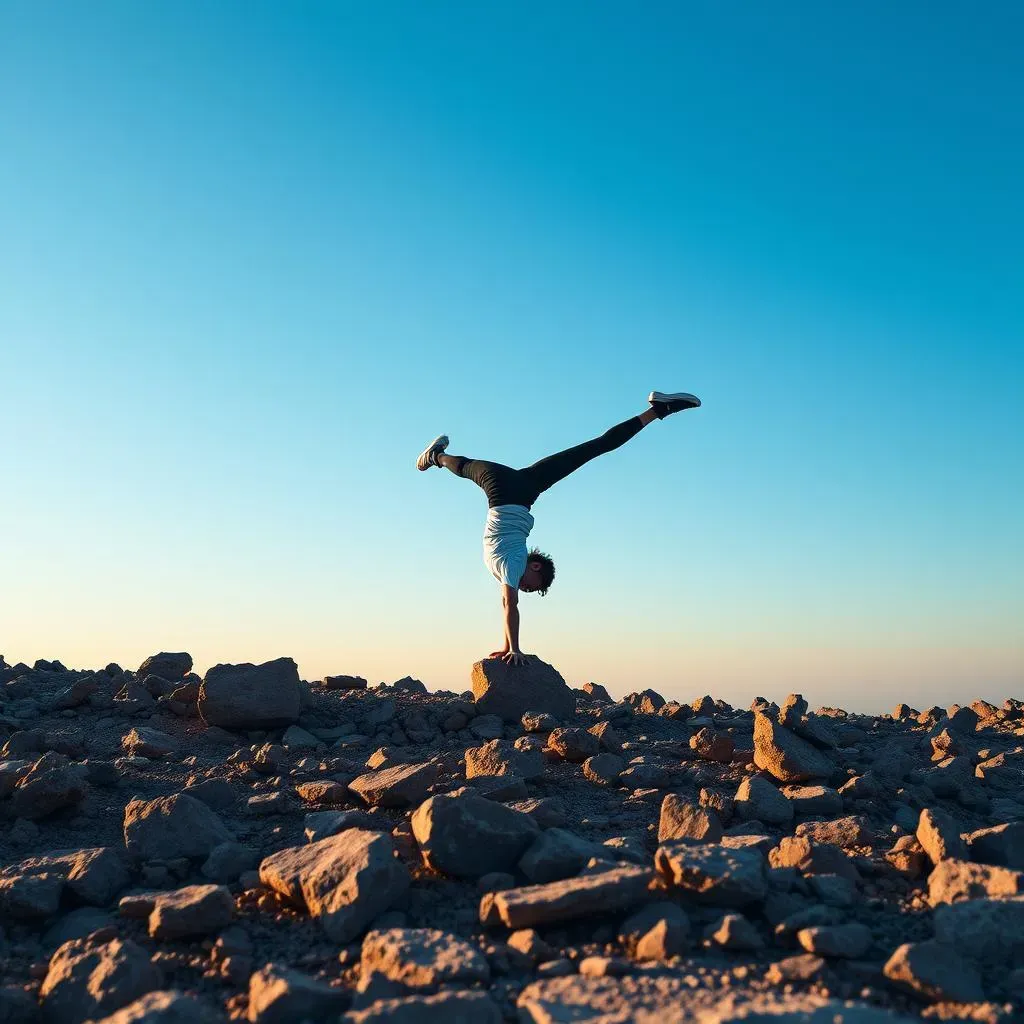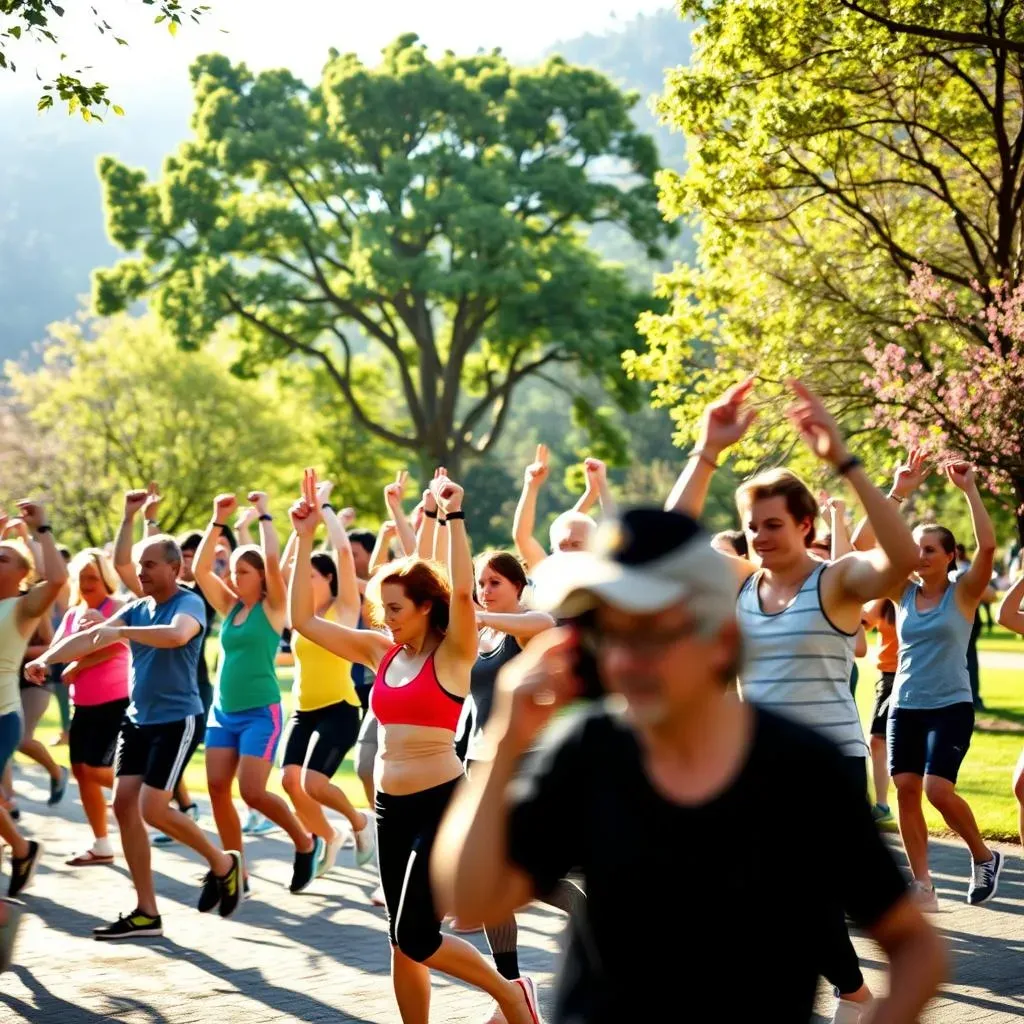Table of Contents
For those wondering, is calisthenics a sport? The answer is a resounding yes. Calisthenics, a form of strength training that utilizes body weight as resistance, has been practiced for centuries and offers numerous benefits for overall fitness and well-being. This article will delve into the world of calisthenics, exploring its rich history, various exercises, and training methods. We will examine the benefits of calisthenics, including improved strength, endurance, and flexibility, as well as its impact on mental health. Whether you're a seasoned athlete or just starting your fitness journey, calisthenics is an accessible and effective way to achieve your goals. So, let's dive into the world of calisthenics and discover why it's considered a sport, its history, and how it can transform your body and mind.
What is Calisthenics and Is Calisthenics a Sport?

What is Calisthenics and Is Calisthenics a Sport?
Defining Calisthenics
Calisthenics is a form of exercise that uses body weight as resistance to build strength, endurance, and flexibility. It involves various movements such as pushing, pulling, bending, and jumping, which can be modified to suit different fitness levels. Whether you're a beginner or an experienced athlete, calisthenics provides a comprehensive workout that can be done anywhere, without the need for specialized equipment.
The term "calisthenics" originates from the Greek words "kallos" (beauty) and "sthenos" (strength). This reflects the discipline's focus on developing both physical strength and aesthetic appeal. Calisthenics has been practiced for centuries, with roots in ancient Greece and China, where it was used as a form of military training and spiritual discipline.
Benefits of Calisthenics | Description |
|---|---|
Improved Strength | Calisthenics helps build muscular strength and endurance through exercises like push-ups, squats, and lunges. |
Increased Flexibility | Calisthenics incorporates stretching and mobility exercises to enhance flexibility and range of motion. |
Weight Management | Calisthenics can help with weight loss and maintenance by burning calories and building lean muscle mass. |
Is Calisthenics a Sport?
Calisthenics is indeed considered a sport due to its physical demands, competitive nature, and global recognition. It requires skill, strategy, and physical prowess, making it a challenging and rewarding discipline. Many calisthenics enthusiasts participate in competitions, known as street workouts, which involve performing complex routines within timed sessions.
Calisthenics has also been recognized by various sports organizations and is included in some fitness competitions. The sport requires athletes to possess strength, endurance, and coordination, as well as creativity in their routine design. Whether you're competing or simply enjoying the workout, calisthenics provides a fun and engaging way to stay active and healthy.
- Improved overall fitness and athleticism
- Enhanced mental discipline and focus
- Increased self-confidence and body awareness
- Opportunities for social interaction and community building
- Accessibility and convenience, as it can be practiced anywhere
Getting Started with Calisthenics
For those interested in trying calisthenics, it's essential to start with basic exercises and gradually progress to more complex movements. Begin with simple exercises like push-ups, squats, and lunges, and gradually increase the difficulty as you build strength and confidence.
It's also important to focus on proper form and technique to avoid injury and get the most out of your workout. Online resources, fitness classes, and training groups can provide valuable guidance and support as you embark on your calisthenics journey.
Benefits of Calisthenics: Why it's Considered a Sport

Benefits of Calisthenics: Why it's Considered a Sport
Physical Benefits of Calisthenics
Calisthenics offers numerous physical benefits that make it an attractive workout option for individuals of all fitness levels. By using body weight as resistance, calisthenics helps build muscular strength and endurance. Exercises like push-ups, squats, and lunges target multiple muscle groups, improving overall muscle mass and bone density.
Calisthenics also enhances flexibility and mobility through stretching and movement exercises. This increases range of motion, reducing the risk of injury and improving overall athletic performance. Additionally, calisthenics can aid in weight management by burning calories and building lean muscle mass, which helps boost metabolism and support weight loss.
Benefit | Description | Examples |
|---|---|---|
Improved Strength | Builds muscular strength and endurance | Push-ups, squats, lunges |
Increased Flexibility | Enhances range of motion and mobility | Leg swings, arm circles, hip rotations |
Weight Management | Supports weight loss and maintenance | High-intensity interval training, burpees, jump squats |
Mental and Emotional Benefits
Calisthenics is not only physically rewarding but also provides numerous mental and emotional benefits. The discipline requires focus, dedication, and perseverance, which can translate to other areas of life, improving mental toughness and resilience.
Calisthenics also promotes mindfulness and self-awareness, as practitioners must pay attention to their breathing, form, and movement. This mindfulness can reduce stress and anxiety, leading to a greater sense of calm and well-being. Moreover, the calisthenics community offers a supportive environment, fostering social connections and a sense of belonging among practitioners.
- Improved mental toughness and resilience
- Enhanced mindfulness and self-awareness
- Reduced stress and anxiety
- Increased sense of community and social connections
Why Calisthenics is Considered a Sport
Calisthenics is considered a sport due to its physical demands, competitive nature, and global recognition. It requires a high level of strength, endurance, and coordination, making it a challenging and rewarding discipline. Many calisthenics enthusiasts participate in competitions, known as street workouts, which involve performing complex routines within timed sessions.
Calisthenics has also been recognized by various sports organizations and is included in some fitness competitions. The sport demands creativity in routine design, strategy, and teamwork, further solidifying its status as a legitimate sport. Whether competing or simply enjoying the workout, calisthenics provides a fun and engaging way to stay active and healthy.
The History of Calisthenics: From Ancient Greece to Modern Times

The History of Calisthenics: From Ancient Greece to Modern Times
Ancient Origins: Greece and China
Calisthenics has its roots in ancient civilizations, where it was practiced as a form of military training, spiritual discipline, and artistic expression. In ancient Greece, calisthenics was used to prepare soldiers for battle, emphasizing strength, agility, and endurance. The Greeks believed that a strong body was essential for a strong mind, and calisthenics was seen as a way to cultivate both physical and mental disciplines.
In ancient China, calisthenics was practiced as a form of martial arts training, focusing on fluid movements, balance, and inner energy. Chinese calisthenics incorporated elements of tai chi, qigong, and meditation, aiming to harmonize the body and mind. These ancient practices laid the foundation for modern calisthenics, which has evolved to incorporate a wide range of exercises and training methods.
Ancient Civilization | Calisthenics Practices | Purpose |
|---|---|---|
Ancient Greece | Military training, gymnastics | Build strength, endurance, and agility for warfare |
Ancient China | Martial arts, tai chi, qigong | Cultivate physical and mental discipline, balance, and inner energy |
Evolution of Calisthenics: Middle Ages to Industrial Revolution
During the Middle Ages, calisthenics continued to evolve in Europe, influenced by the ancient Greek and Roman traditions. Gymnastics and acrobatics became popular forms of entertainment and physical training, with traveling performers showcasing their skills. As urbanization increased during the Industrial Revolution, calisthenics became a way for people to stay active and healthy in crowded cities.
The late 19th and early 20th centuries saw the rise of physical culture movements, which emphasized the importance of exercise and fitness for overall health. Calisthenics was at the forefront of this movement, with pioneers like Friedrich Ludwig Jahn and Per Henrik Ling developing new exercises and training methods. Their work laid the groundwork for modern calisthenics, which emphasizes functional strength, flexibility, and bodyweight training.
- Development of gymnastics and acrobatics in the Middle Ages
- Influence of physical culture movements in the Industrial Revolution
- Contributions of pioneers like Jahn and Ling to modern calisthenics
Modern Calisthenics: Globalization and Diversification
In the 20th century, calisthenics experienced a resurgence in popularity, particularly in the 1980s and 1990s with the rise of street workouts and competitive calisthenics. Modern calisthenics encompasses a broad range of styles, from traditional bodyweight exercises to more dynamic and gymnastic movements. The sport has become a global phenomenon, with communities and competitions springing up in cities around the world.
Today, calisthenics is recognized as a sport by many organizations, and its popularity continues to grow. With the advent of social media, calisthenics enthusiasts can share their routines, connect with others, and learn from top athletes. Whether practiced for recreation, competition, or personal growth, calisthenics remains a vibrant and dynamic discipline that continues to evolve and inspire new generations.
Calisthenics Exercises and Training Methods: A Comprehensive Guide

Calisthenics Exercises and Training Methods: A Comprehensive Guide
Introduction to Calisthenics Exercises
Calisthenics offers a wide range of exercises that can be modified to suit different fitness levels. From basic movements like push-ups and squats to more advanced exercises like handstands and muscle-ups, calisthenics provides a comprehensive workout for the entire body. Whether you're a beginner or an experienced athlete, calisthenics exercises can be tailored to meet your individual needs and goals.
One of the key benefits of calisthenics is its accessibility. All you need is your own body weight as resistance, making it possible to train anywhere, whether at home, in a park, or at the gym. This convenience, combined with the variety of exercises available, makes calisthenics an ideal choice for those looking to improve their strength, flexibility, and overall fitness.
Exercise | Description | Benefits |
|---|---|---|
Push-ups | Works chest, shoulders, and triceps | Builds upper body strength and endurance |
Squats | Targets legs, glutes, and core | Improves lower body strength and balance |
Lunges | Works legs, glutes, and core | Enhances balance, flexibility, and overall lower body strength |
Training Methods: Progressions and Regressions
Calisthenics training methods are designed to be adaptable and progressive. As you build strength and confidence, you can modify exercises to increase difficulty or reduce them to make them more accessible. This approach allows you to tailor your workout to your current fitness level and goals, ensuring continuous progress and minimizing the risk of injury.
Progressions involve increasing the difficulty of an exercise by changing the angle, range of motion, or adding complexity. Examples include diamond push-ups, single-leg squats, and plank jacks. Regressions, on the other hand, simplify exercises to make them more manageable for beginners or those who need to modify their workout. Examples include knee push-ups, bodyweight squats, and wall sits.
- Progressive overload: Gradually increase the difficulty of exercises as you get stronger
- Variety: Incorporate different exercises and training methods to avoid plateaus and prevent overuse injuries
- Consistency: Aim for regular workouts and patience, as progress takes time
- Listen to your body: Rest and recovery are just as important as the workout itself
Co-operative Calisthenics: Training with a Partner
Co-operative calisthenics involves two or more people working together to perform exercises. This approach not only adds variety to your workout but also provides an opportunity to build trust, communication, and teamwork skills. Partner exercises like assisted pull-ups, tandem squats, and Medicine Ball toss can add a fun and challenging dimension to your training.
Co-operative calisthenics also offers a safety benefit, as a partner can provide support and spotting, reducing the risk of injury. Additionally, training with a partner can help motivate you to push beyond your limits and celebrate each other's successes.
Calisthenics in the Modern Era: Parks, Competitions, and Community

Calisthenics in the Modern Era: Parks, Competitions, and Community
Calisthenics Parks: Outdoor Fitness for All
Calisthenics parks, also known as outdoor fitness parks or adult playgrounds, have become increasingly popular worldwide. These parks provide an outdoor space equipped with various apparatuses such as pull-up bars, parallel bars, benches, and ropes, allowing individuals to engage in calisthenics exercises. Calisthenics parks are a great way to stay active, enjoy the outdoors, and connect with like-minded individuals who share a passion for fitness.
One of the benefits of calisthenics parks is their accessibility. They are usually free or low-cost, making them an attractive option for those who cannot afford gym memberships. Additionally, the outdoor setting provides a refreshing change from the confines of a traditional gym, offering a unique and enjoyable workout experience.
Equipment | Description | Examples of Exercises |
|---|---|---|
Pull-up Bars | Used for pull-ups, chin-ups, and leg raises | Builds back, arm, and core strength |
Parallel Bars | Used for dips, L-sits, and leg raises | Targets triceps, chest, and core muscles |
Benches | Used for step-ups, dips, and bench jumps | Improves leg strength, balance, and cardiovascular endurance |
Competitive Calisthenics: Street Workout and Competitions
Competitive calisthenics has gained popularity in recent years, with the rise of street workout competitions. These events bring together calisthenics enthusiasts from around the world to showcase their skills, creativity, and physical prowess. Competitors perform complex routines that demonstrate their strength, endurance, and agility, often incorporating gymnastic movements and holds.
Street workout competitions not only provide a platform for athletes to compete but also serve as a way to promote the sport, encouraging newcomers to join the calisthenics community. Many competitions offer workshops, seminars, and training sessions, fostering a sense of camaraderie and knowledge-sharing among participants.
- Builds strength, endurance, and agility
- Encourages creativity and self-expression through routine design
- Fosters a sense of community and connection among participants
- Provides opportunities for personal growth and development
Calisthenics Community: Connecting and Inspiring
The calisthenics community is a vibrant and supportive network of individuals who share a passion for the sport. Social media platforms, online forums, and local meetups provide opportunities for practitioners to connect, share knowledge, and learn from one another. Many communities organize group workouts, events, and competitions, which help to build motivation and accountability.
The calisthenics community is also known for its inclusivity, welcoming individuals of all ages, fitness levels, and backgrounds. Whether you're a seasoned athlete or just starting out, you'll find a supportive environment that encourages you to push your limits and celebrate your successes.
Conclusion: Why Calisthenics is a Sport and a Way of Life
In conclusion, calisthenics is indeed a sport that offers a wide range of benefits, from improved physical strength and flexibility to enhanced mental well-being. With its rich history, various training methods, and accessibility, calisthenics has become a popular choice for individuals seeking a holistic approach to fitness. Whether you're looking to improve your overall health, prepare for competitive sports, or simply challenge yourself, calisthenics provides a fun and effective way to achieve your goals. As you embark on your calisthenics journey, remember that it's not just a form of exercise – it's a way of life that can transform your body, mind, and spirit. So, get ready to experience the power of calisthenics and discover why it's considered a sport by many enthusiasts around the world.
